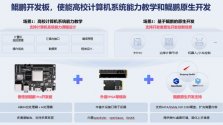It is being proved completely false as we speak. China's percentage of global chips production has gotten to the point of "overcapacity."
This the flip side of the argument on "supply chain resilience":
And it is a far more likely scenario because of this:
This the flip side of the argument on "supply chain resilience":
The long-term capability of China’s chip industry remains unknown, but the likelihood of it developing advanced chip-making capabilities is almost certain. Demand for chips is , and China now leads the world in terms of the number of . The question many experts are asking is whether China’s tech industry can produce advanced chips at scale. Perhaps the more important question is what happens if China succeeds. The emergence of a completely independent Chinese chip ecosystem would have massive geopolitical repercussions.
And it is a far more likely scenario because of this:
The Chinese market is already the world’s , purchasing more than 50 percent of the chips manufactured globally.
Last edited:

